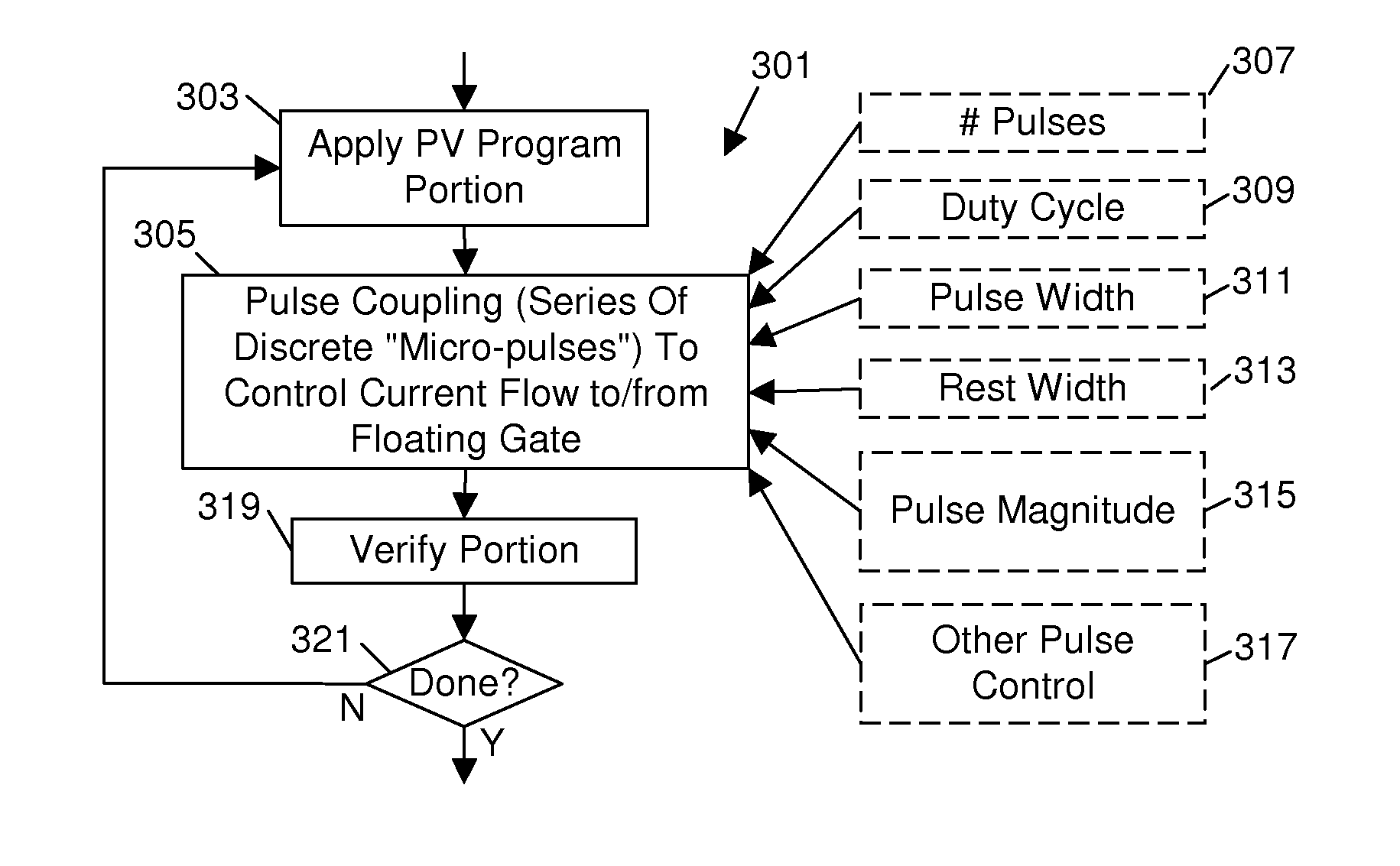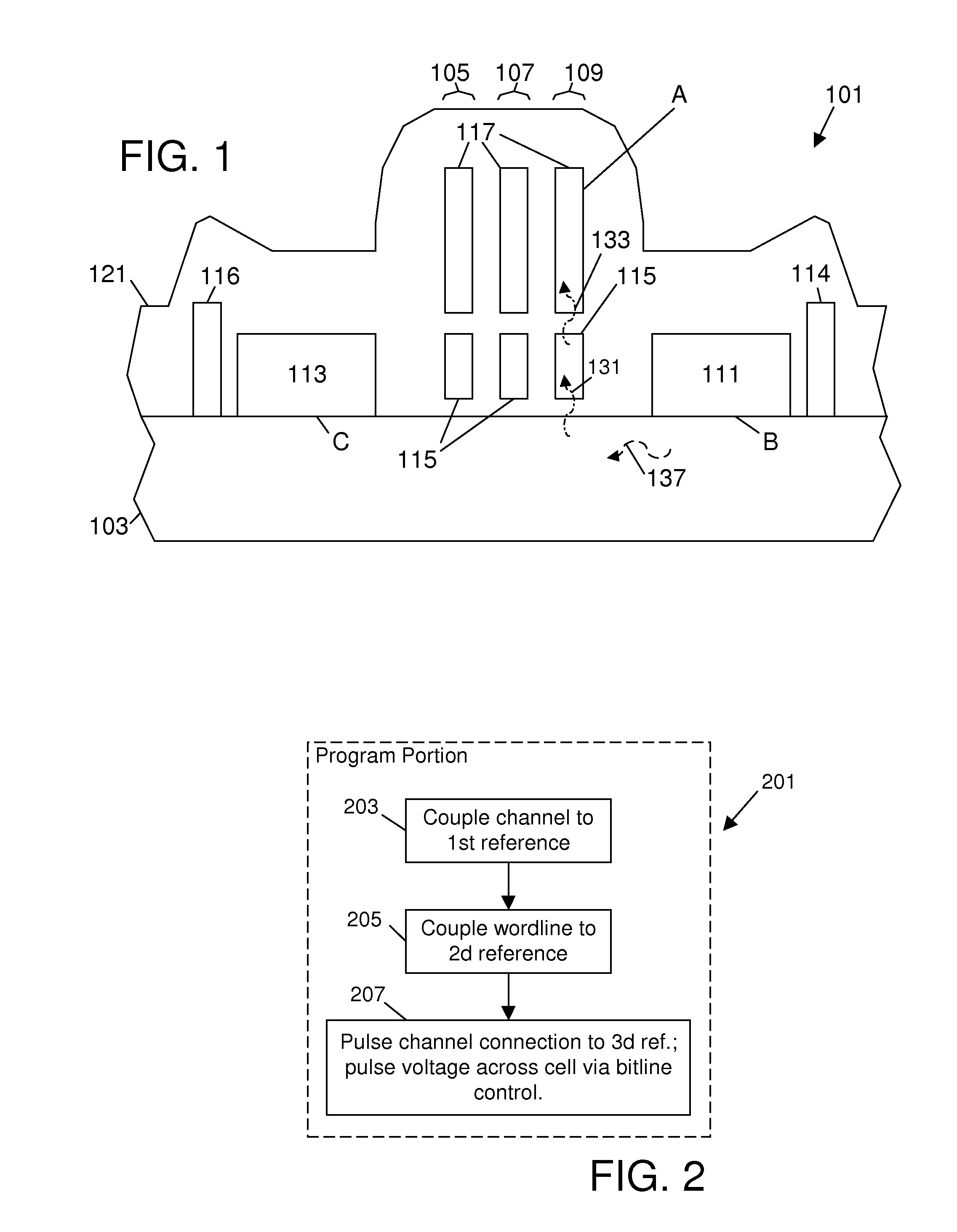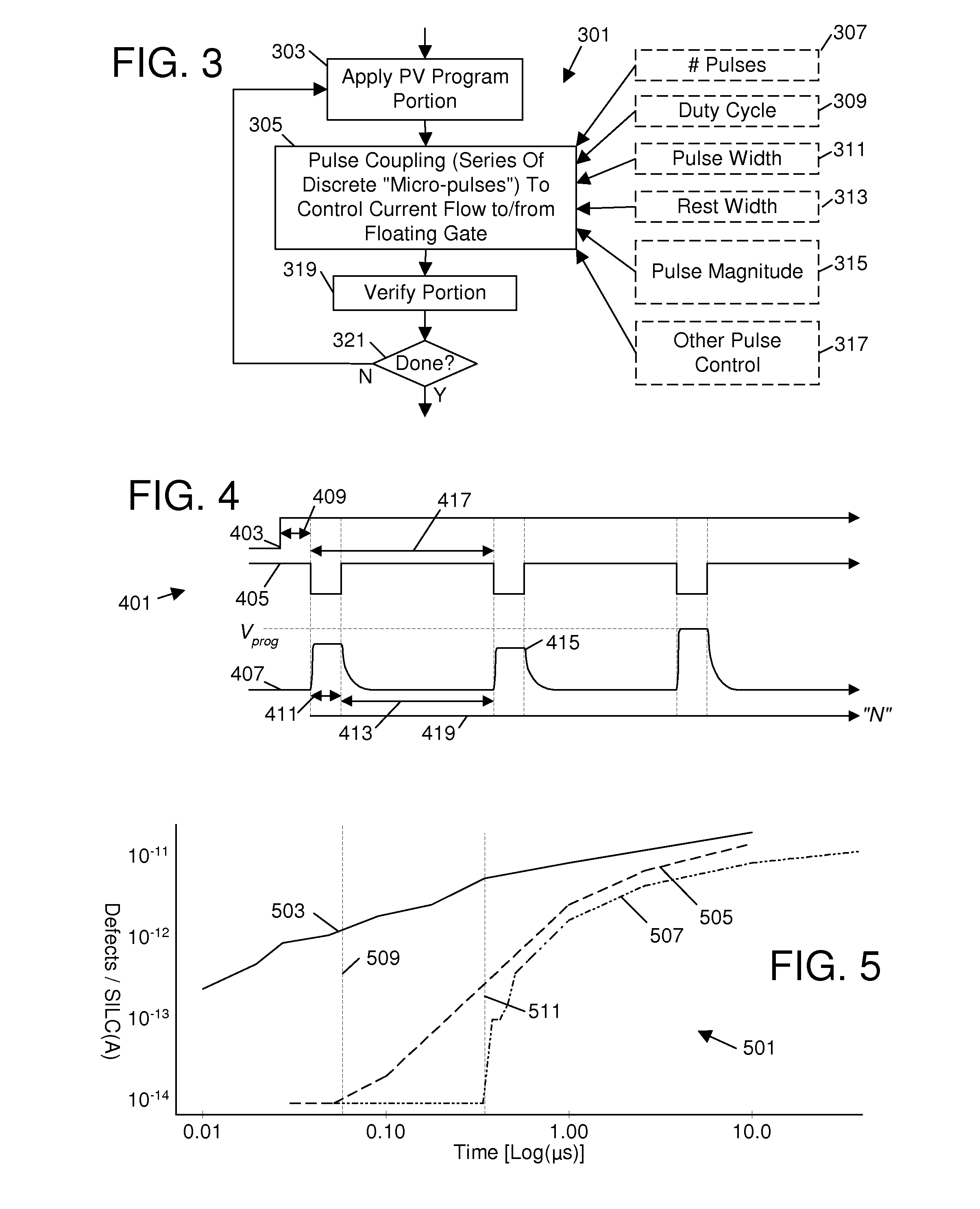Pulse Control For NonVolatile Memory
a nonvolatile memory and pulse control technology, applied in the field of pulse control for nonvolatile memory, can solve the problems of difficult generation of discrete pulses that are effective for these purposes, stable defect structure, and difficult annealing or repair,
- Summary
- Abstract
- Description
- Claims
- Application Information
AI Technical Summary
Problems solved by technology
Method used
Image
Examples
first embodiment
[0029]A first embodiment presented by this disclosure provides a method of controlling a bitline of a memory cell in order to limit electric field times so as to inhibit defect formation; an associated structure is also provided. The design philosophy adopted by embodiments based on bitline control is that wordline voltage should be held relatively constant (e.g., wordline control separated from application of a multiple pulses to effectuate a single program cycle) and a bitline should be pulsed between ground and another reference voltage to turn off programming (or other voltage activities) and provide a rest state. Because a bitline presents reduced loading issues relative to other conductors in a flash memory device (as the bitline is typically fabricated from a metal, e.g., copper), pulsed operations discussed herein may be effectively applied to substantially shorten pulse rise time. Simply stated, using bitline control helps facilitate short duration voltage pulses, potential...
second embodiment
[0051]FIG. 9 presents block diagram 901 of one implementation of to bitline control in a flash memory device. In particular, two basic elements are illustrated in FIG. 9, including control logic 903 and a page buffer 905; the memory array itself is not illustrated so as to explain some of the control functions associated with the device. The control logic handles functions associated with switching, voltage control and associated timing for the memory array; these functions are illustrated by several logic blocks in FIG. 9. This control logic is generically connected to the device (e.g., to supply a write data register (“WDR”) 915, bitline drivers 917 and sense amplifiers 921), though it should be understood that individual logic elements depicted (designated by numerals 907, 909, 911 and 913) may in fact electrically connect to and control only specific elements within the device, e.g., to the memory array, sense amplifier, WDR, or only to other logic elements. A state machine 907 ...
PUM
 Login to View More
Login to View More Abstract
Description
Claims
Application Information
 Login to View More
Login to View More - R&D
- Intellectual Property
- Life Sciences
- Materials
- Tech Scout
- Unparalleled Data Quality
- Higher Quality Content
- 60% Fewer Hallucinations
Browse by: Latest US Patents, China's latest patents, Technical Efficacy Thesaurus, Application Domain, Technology Topic, Popular Technical Reports.
© 2025 PatSnap. All rights reserved.Legal|Privacy policy|Modern Slavery Act Transparency Statement|Sitemap|About US| Contact US: help@patsnap.com



